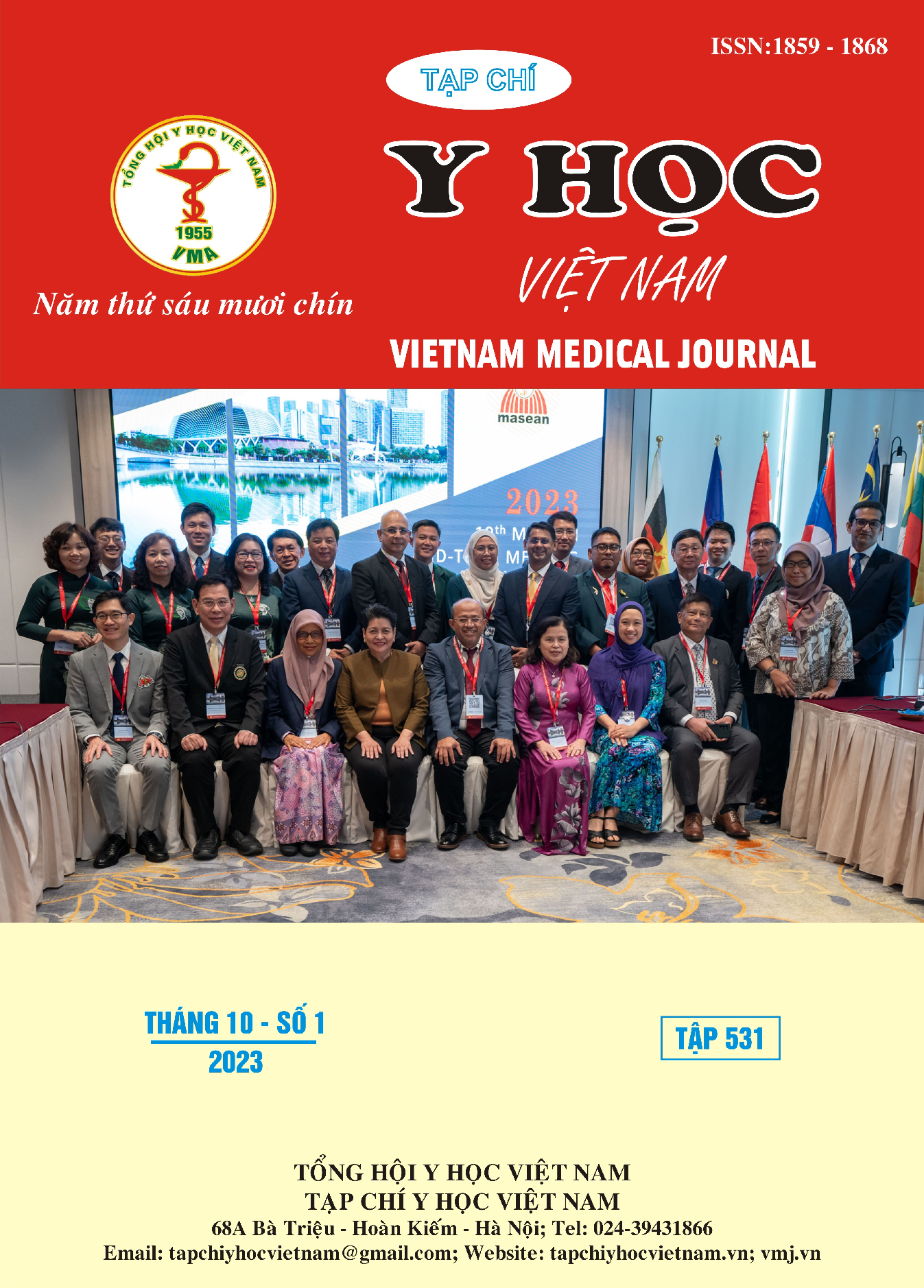PREGNANCY OUTCOMES OF PREGNANT WOMEN WITH ANTENATAL PLACENTA PREVIA ADMITTED TO AN GIANG HOSPITAL OF OBSTETRICS GYNECOLOGY AND PEDIATRICS IN 2021 - 2022
Main Article Content
Abstract
Background: Placenta previa is a major problem that obstetricians face, increased risk of blood transfusion, nearby organs injured, high rates of hysterectomy due to maternal hemorrhage, leading to high maternal mortality. The perinatal mortality rate is also increased due to increased rates of preterm birth, fetal underdevelopment, and fetal distress. Therefore, the disease has been a burden for society. Objectives: Determine treatment result of placenta previa pregnancies hospitalized at An Giang Hospital of Obstetrics Gynecology and Pediatrics in 2021 - 2022. Subjects and methods: A descriptive cross-sectional study with analysis was performed at An Giang Hospital of Obstetrics Gynecology and Pediatrics from 2021 to 2022 with 44 cases of placenta previa. Result: the rate of cesarean delivery was 95.5%. The rate of planning cesarean delivery in pregnancies who diagnosed placenta previa was 23.6% while emergency cesarean was 76.2%. Maternal complications include: 1 case in total 44 cases needed reoperate, hypovolemic shock accounted for 2.3% and there was no maternal death. The percentage of infants <2000 grams was 11.4%, 34.1% infant needed special care in the Neonatal Intensive Care Units and there were no newborn deaths. Conclusion: Placenta previa increases the rates of cesarean delivery, risk of hysterectomy in maternal, preterm birth, and low birth weight in neonates.
Article Details
Keywords
Placenta previa, placenta accreta spectrum, pregnancy outcomes
References
2. Bộ môn Phụ sản, Đại học Y Dược Tp Hồ Chí Minh (2020), “Nhau tiền đạo”, Bài giảng Sản khoa, Nhà Xuất bản Y học, tr 438-445.
3. Đoàn Tôn Lĩnh (2017), “Nghiên cứu một số yếu tố nguy cơ và kết quả xử trí rau tiền đạo”, Luận văn Thạc sĩ Y học, Trường Đại học Y Dược Huế.
4. Nguyễn Ngọc Hoàng Mai (2018), “Nghiên cứu đặc điểm lâm sàng, cận lâm sàng và kết quả điều trị rau tiền đạo tại Bệnh viện Sản- Nhi Phú Yên”, Luận án chuyên khoa II, Trường Đại học Y Dược Huế.
5. Lâm Đức Tâm (2016), “Nghiên cứu Tỉ lệ nhau tiền đạo và một số yếu tố liên quan tại Bệnh viện Phụ Sản Thánh phố Cần Thơ”, Báo cáo hội nghị Phụ-Sản miền Trung- Tây Nguyên, lần thứ VII, tr 103-106.
6. Ashete Adere, Abay Mulu, Fikremelekot Temesgen (2019), Neonatal and Maternal Complications of Placenta Praevia and Its Risk Factors IN Anbessa Specialized and Gandhi Memorial Hospitals: Unmatched Case- Control Study, Journal Pragnancy.
7. Gibbins KJ, Einerson BD, Varner MW, Silver RM (2018), “Placenta previa and maternal hemorrhagic morbidity”, J Matern Fetal Neonatal Med, 31(4), pp 494-499.
8. Jansen C.H.J.K, Kastelein A.W, Emily Kleinrouweler C, Van Leeuwen L, De Jong K.H, Pajkrt E & Van Noorden C.J.F (2020), “Development of placental abnormalities in location and anatomy- a narrative review”, Acta Obstertricia et Gynecologica Scandinavica.
9. King Lj, Dhanya Mackeen A, Nordberg C, Paglia MJ (2020), “Maternal risk factors associated with persistent placenta previa.”, Placenta; 99:189.
10. Long SY, Yang Q, Chi R, et al (2021), “Maternal and Neonatal Outcomes Resulting from Antepartum Hemorrhage in Women with Placenta Previa and Its Associated Risk Factors: A Single-Center Retrospective Study”, Ther Clin Risk Manag; 17:31.


